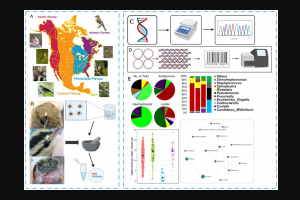Lyme Disease Outbreaks
Lyme Disease Outbreaks 2025
Lyme disease (Lyme borreliosis) is a bacterial disease transmitted to humans through the bite of infected ticks. Lyme disease is common in Europe, the United Kingdom, and the United States, according to the World Health Organization (WHO). In 1977, the first 51 cases of Lyme arthritis were described, and the Ixodes scapularis (black-legged) tick was linked to the disease transmission in Lyme, Connecticut. The U.S. Centers for Disease Control and Prevention (CDC) reported on February 15, 2024, that Lyme disease cases, the most common vectorborne disease in the United States, increased by 69%, 1.7 times the annual average during 2017–2019 in the United States. In November 2024, a study determined that 50% of adult blacklegged ticks carry the bacteria that causes Lyme disease, while up to 25% of the younger (nymph) blacklegged ticks carry the bacteria.
In 2024, the Pennslyvania Department of Health Tickborne Disease Dashboard shows Lyme disease cases peak in June through August. Wisconsin, Vermont, Rhode Island, New Jersey, New York, New Hampshire, Maine, Pennsylvania, and Connecticut were the leading states in 2022. The CDC has published the Tick Bite Data Tracker, which displays case data, and the CDC has published a Lyme disease case map for the U.S.
Lyme Disease Outbreaks United Kingdom
In the U.K., the Health Security Agency says Lyme disease-carrying ticks are most active in the spring and summer. Approximately 4% of ticks in England and Wales are infected with Lyme disease.
Lyme Disease Outbreaks Europe
The World Health Organization Europe says the number of Lyme disease cases in Europe has increased steadily, with more than 360,000 cases reported over the last two decades. Central Europe has the highest incidence of Lyme disease, as reported by the Czech Republic, Estonia, Lithuania, Poland, and Slovenia.
Lyme Disease Causes
Lyme disease is a tickborne zoonosis caused by certain species of Borrelia spirochetes. Ticks transmit at least 20 different disease-causing bacteria, viruses, and parasites to people. The risk of contracting a tickborne infection and Lyme disease is determined by the number of ticks in an area, the proportion of those carrying the bacteria, and human behavior, such as walking in tick-infested fields. A study found the overall risk of developing Lyme borreliosis after a tick bite was 2.6% (95%CI 1.4–5.1).
PrecisionVaccinations publishes Lyme disease vaccine news.





